ZEN MESTEREK ZEN MASTERS
« Zen főoldal
« vissza a Terebess Online nyitólapjára
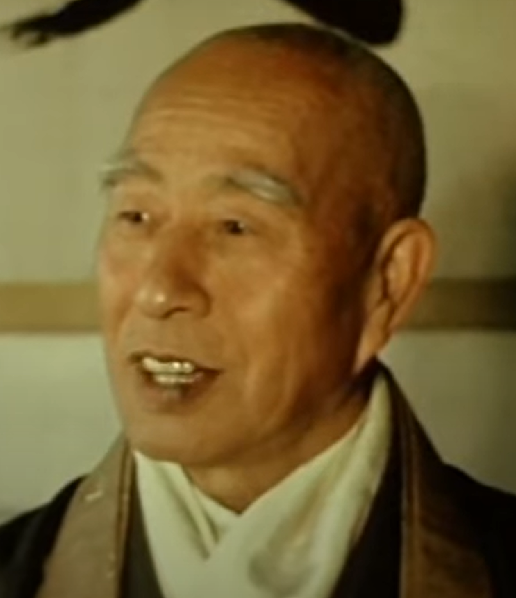
柴山全慶 Shibayama Zenkei (1894-1974)
Pen names: 文明全慶 Bunmin Zenkei, 寒松軒 Kanshō-ken, 千聖道人 Senshō-dōnin
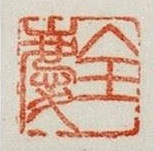
全慶 Zenkei
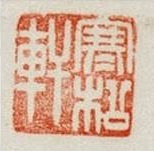
寒松軒 Kanshō-ken
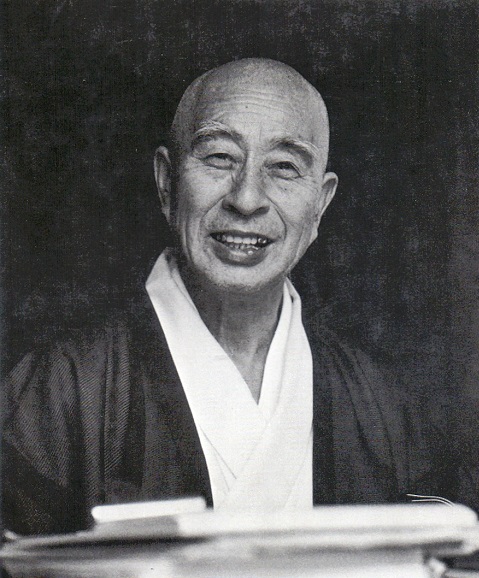
Zenkei Shibayama (1894—1974) was a Japanese Rinzai Zen priest who served as head Roshi of Nanzenji Zen Monastery in Kyoto and also as head of the Nanzenji Branch of Rinzai Zen — which oversees some five-hundred subtemples. Shibayama (a Dharma heir of Kono Roshi) was also a Buddhist scholar, holding professorships at Hanozono University and Otani University (both Buddhist colleges). Shibayama was a prolific author on Zen Buddhism in the Japanese language, works which have since been translated for an English audience.
Shibayama-Roshi was an influential calligrapher and traveled throughout the United States lecturing and teaching zazen for select audiences during the 1960s and 1970s. Ordained a monk at age fourteen, he briefly practiced Christianity resulting from disillusionment with the state of Buddhism in Japan. He was also an expert in Esperanto, the constructed international auxiliary language. In 1916 he returned to Zen practice and after many years of training at Nanzenji and teaching in the universities, he was invited to become head teacher of Nanzenji in 1948. In 1959 he was elected as kancho, or chief abbot, of the Nanzeji Branch of Rinzai Zen. One of Shibayama's better-known students (and Dharma heir) is Keido Fukushima—the late Abbot of Tofuku-ji in Kyoto.
Shibayama Zenkei
in: The Art of Twentieth-Century Zen, Paintings and Calligraphy by Japanese Masters
Eds. Audrey Yoshiko Seo with Stephen Addiss. Boston and London, 1988, pp. 167-178.
Authored Books
A Flower Does Not Talk. Translated by 工藤澄子 Kudō Sumiko (1929-)
, [Kyoto], 1966, 60 pages
On zazen wasan: Hakuin's Song of Zazen.
Translated by 工藤澄子 Kudō Sumiko (1929-), Kyoto, 1967, 88 pages
The Six Oxherding Pictures. Translated by 工藤澄子 Kudō Sumiko (1929-); Nissha Printing Co., [Kyoto, 1967], 48 pages
Zenkei Shibayama and Gyokusei Jikihara: Zen Jūgyūzu – Zen Oxherding Pictures, Tokyo: Sōgen-sha, 1975.
Cf. Zenkei Shibayama: Jūgyūzu, Tokyo: Kōbundō, 1941, repr. 1954.A Flower Does Not Talk: Zen Essays. Translated by 工藤澄子 Kudō Sumiko (1929-); Charles E. Tuttle Company, Inc., Rutland & Tokyo, 1970.
The Gateless Barrier: Zen Comments on the Mumonkan, Boston : Shambhala, 2000.
Originally published: Zen comments on the Mumonkan. Translated by 工藤澄子 Kudō Sumiko (1929-). New York : Harper & Row, 1974.PDF: Zen Inspirations: Essential Meditations and Texts
The Gateless Gate, pp. 72-143
from Zen Comments on the Mumonkan by Zenkei Shibayama, English language translation copyright © 1974 by Zenkei ShibayamaPDF: The Art of Twentieth-Century Zen, Paintings and Calligraphy by Japanese Masters
Eds. Audrey Yoshiko Seo with Stephen Addiss. Boston and London, 1988The Book of the Zen Grove: Phrases for Zen Practice
by Zenrin R. Lewis
Foreword by Gary Snyder
1996, 144 p.
This book is an English translation of Shibayama Zenkei Roshi's Zenrin Kushu. It contains the original Chinese phrases together with English, and Japanese translations.Zenrin R. Lewis (Hg.): Der Zen-Wald. Koan-Antworten aus dem Zenrin kushu. Chinesisch-Deutsch. Übertragen von Guido Keller. Angkor Verlag, 2012, 172 S.
"One-word gates: ro, kan, jaku, kan." 一字関: 露、閑、寂、関
Chanoyu Quarterly 50 (1987): 7-22.Kunchū zenrin kushū (Annotated zen Sangha Phrase Collection)
edited and revised by Shibayama Zenkei Rōshi (Kichūō 1972).Shibayama Zenkei Rōshi (1894–1974) began his long career in Buddhism when,
under the influence of his devout mother, he entered a Buddhist temple at age
fourteen. As he grew older, he grew critical of the Buddhist institution in Japan
and for a while left Buddhism for Christianity. He also studied Esperanto and
became one of the best Esperanto speakers in Japan at that time. Still on the
spiritual search, he heard an inspiring lecture from a rōshi, which made him
decide to enter a Zen monastery in 1916. After many years of monastery training
at Nanzenji, he taught as a professor at Hanazono and Ōtani Universities
in Kyoto. He was invited back to the Nanzenji monastery as its Rōshi in 1948
and was elected kanchō or chief abbot of the entire Nanzenji line in 1959.
Shibayama Rōshi became known to the West in 1965, when he took the first
of several visits to the United States to present special lectures and teach zazen
at selected universities (Kudō 1975).
Shibayama’s revised version of the Zenrin kushū is one of the standard
handbooks that Japanese Rinzai monks consult when assigned jakugo. The first
edition of the book appeared in 1952 and, although he probably intended it for
monks doing kōan practice, it also became popular with people practicing the
tea ceremony and calligraphy. Consequently Shibayama produced a revised
second edition in 1972, increasing the number of phrases by 300 and simplifying
the ordering system. The second edition contains 2,646 phrases and
verses, arranged according to number of characters within each number division,
according to the on-reading of the first Chinese character of the phrase
(and not according to the Japanese reading, as is the case in the Zengoshū). In
addition, each phrase or verse is accompanied by a full Japanese reading written
in kana and a short annotation or explanation. Often a source is cited. This
particular text is easily the most user friendly of the several jakugo texts but it
is also the one that attracts criticism. Some critics say that the Shibayama
collection encourages monks to read the explanations and not the original
phrases themselves. Others say that the explanations tend to consist of stereotypical
intellectual phrases which are irritating to the practitioner who is seeking
words to capture a living experience. Some monasteries actively discourage
their monks from using this text.
(G. Victor Sōgen Hori)
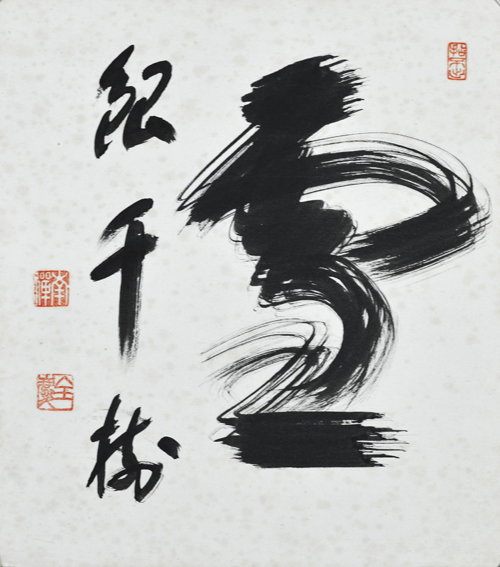
雪 銀千樹
Snow. They look like silver on a thousand trees.
Calligraphy by
(Shibayama) Bunmin Zenkei
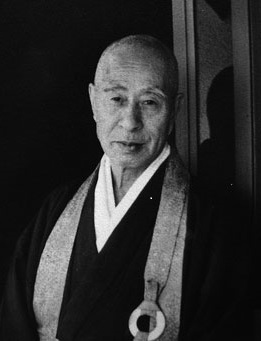
Shibayama's Dharma Lineage
[…]
白隱慧鶴 Hakuin Ekaku (1686-1769)
峨山慈棹 Gasan Jitō (1727-1797)
卓洲胡僊 Takujū Kosen (1760-1833)
妙喜宗績 Myōki Sōseki (1774-1848)
迦陵瑞迦 Karyō Zuika (1790-1859)
潭海玄昌 Tankai Genshō (1811-1898)
毒湛匝三 Dokutan Sōsan (1840-1917) [豐田 Toyoda]
霧海古亮 Mukai Koryō (1864-1935) aka 河野霧海 Kōno Mukai or 南針軒 Nanshinken
文明全慶 Bunmin Zenkei [柴山 Shibayama]
高山泰巌 Takayama Taigan (1933-1998)
慶道元照 Keidō Genshō (1933-2011) [福島 Fukushima]
IN MEMORY OF SHIBAYAMA ZENKEI (1894-1974)
By Kudo Sumiko
from The Eastern Buddhist 8,1 (May 1975), pp. 149-154, with minor revisions
On August 29th, 1974, Abbot Shibayama Zenkei of Nanzenji closed his life of
eighty years. As the last poem he wrote reveals, he devoted his life to the
work of compassion:Carrying snow and filling the well,
For eighty-one years I have lived.
Truly there is nothing special –
I sleep with limbs outstretched.If one tries to fill a well with sand, however small the amount of
sand one carries each time, the well will one day be full. If, however, one tries
to fill it with snow, his efforts will never be rewarded, however hard he works.
Still, such a sacred fool is the ideal image of man in Zen, and Shibayama
Roshi actually lived the life of filling a well with snow, trying to transmit Zen
both in Japan and abroad.
Shibayama Zenkei was born in a village near Nagoya in 1894 as the
first son of the Shibayamas, landowners of the area. He spent a happy
childhood with good and considerate parents. While in elementary school his
ambition was to be a general, a dream a great many boys had in those days.
But he was not strong enough physically to enter junior military academy.
One of his uncles was the Chief Abbot of Myoshinji in Kyoto and he must
have impressed the young boy as a great man, for he decided that if he could
not become a general, the next best thing would be to become a Zen abbot.
Because he was very fond of learning, his mother, who was a devout
Buddhist, thought it might be a good idea for her son to be a Zen monk. So
when he was fourteen years old he was sent to a nearby Zen temple as an
apprentice monk.
When later he entered the Rinzai sect's college in Kyoto (now
Hanazono University) and studied Zen, everyone thought he would turn out
to be a good monk. As he grew older, however, he became critical of various
aspects prevalent in the traditional Buddhist organizations in Japan, and
found he could not just naively follow the usual course in becoming a monk.
He began to study Christianity, and entered a Christian college. In those
days there was a Christian movement led by Kagawa Toyohiko which
advocated helping the poor by living among them. He agreed with this
movement, and was ready to join them. It was partly due to physical reasons
that he did not, but it was mostly because of his mother's earnest pleas
against leaving the priesthood.
Shibayama Roshi was against the old sectarian interpretations of
religion, and was interested in Ludwig Zamenhof's advocacy of one world
with one language. He studied Esperanto, and became one of the best
Esperanto speakers in all Japan. But such ideas were considered dangerous
in those days, and his name appeared on the black list of the Secret Police.
As he was searching various spiritual avenues in this way, he happened one
day to hear a talk by a Zen abbot, Mamiya Roshi, in which he said: "If one
could cover the whole world with calf leather, it would certainly be wonderful.
Then you could go wherever you wanted without dirtying or hurting your
feet. As an idea, it is wonderful, but in actuality, quite impossible. Rather
than talking of leathering the whole world, why don't you put a good pair of
shoes on your own feet. Why don't you train yourself and perfect your own
personality? Then you can go to any corner of the world wearing good shoes,
and work to save your fellow beings." It was this talk that made the young
Shibayama decide to enter a Zen monastery and become a monk. He said it
made him realize how foolish he was, just talking about the idealistic
impossibility of saving the whole world unaware that he in fact had neither
the power, the ability, nor the wisdom to actually accomplish it.
In 1916 he entered Nanzenji Monastery, and for over ten years went
through hard training under Abbot Kono Bukai, noted as a very severe
master. Finishing his monastery training, he turned to the academic study of
Zen, later becoming a professor at Hanazono University, and also at Otani
University as a successor to Suzuki Daisetz. In 1948, after ten years of
university teaching, he was invited back to Nanzenji Monastery as Roshi,
Zen master in charge of training monks, and in 1959, he was elected the
head abbot of the Nanzenji organization of temples. In that capacity he was
widely respected as one of the leading Zen masters of contemporary Japan.
Shibayama Zenkei was a rare example of a Zen man in whom
refined personality, penetrating insight, profound experience, and high
learning were all wonderfully combined. He was a compassionate and
understanding religious teacher who awakened love and peace in the hearts
of all who came in touch with him. He was a strict Roshi who guided his
disciples always from the genuine Zen standpoint, never yielding to any
immature understanding, whether intellectual, psychological, or emotional.
As a scholar he was one of the few Zen monks with a philosophical basis and
creative thinking based on long and diligent study.
Any mention of Shibayama Zenkei must include reference to the
overseas activities in which he was engaged towards the end of his life. I was
fortunate enough to accompany him on these trips as his interpreter. It is
said that "Silence is more suitable to Zen than eloquence." Every year since
1965, Shibayama Roshi flew to the United States with the wish of
transmitting Zen to the West. For this, speech and eloquence were not
suitable. "Zen is not something that can be explained and understood; a talk
or two on Zen in the United States would mean nothing," he said as he
traveled the American continent from west to east, north to south, giving
talks on Zen at various American colleges and universities. Although he was
warmly received with goodwill and friendship everywhere, for an aged Roshi
over seventy years old, three months of travel from one school to another
with changes of climate and different food was not easy. It was certainly the
picture of an old sacred fool trying to fill a well with snow.
When the late Suzuki Daisetz was over ninety and he realized that
the task of introducing Zen thought to the West was becoming too strenuous
for him, he recognized that there was more and more need for an authentic
Zen master to go abroad and provide practical guidance. Thus he turned to
Shibayama Roshi. While agreeing that the idea was a good one, Shibayama
Roshi felt that he was too old for the job, and, when a trip was proposed to
him by the Hazen Foundation, he had misgivings about not being enough of
a scholar to deliver the required lectures. Yet in January 1965, he left Japan
on his first trip to the United States, unable to refuse any longer the earnest
requests of Dr. Suzuki and the Foundation members.
On this first occasion we visited the University of Hawaii,
Claremont, Carleton College, Earlham College, Atlanta University, Duke,
Colgate, and Wesleyan University, with the Roshi giving talks on such
subjects as "Characteristics of Zen," "Freedom in Zen," "Training in Zen," and
"The Ideal Image of Man in Zen." We stayed at one school from a week to ten
days, during which time Roshi delivered public lectures, held seminars, and
talked personally with many students and professors.
The lecture hall was usually full, and the hour-long talk, including
translation, was always followed by a period of lively questions and answers.
Seeing learned professors, authorities in the field of religious studies, raising
their hands high in the very first row together with the students, Shibayama
Roshi was at first rather surprised, as this was something he had never
experienced in Japan. He disliked by nature pedantry, pretension,
Zen-monkishness or anything of that sort. Without any ostentation, he would
give true Zen answers. His attitude, or personality, naturally impressed the
audience. The sincere but initially slightly stiff atmosphere of the hall was
soon a congenial gathering of friends, as the audience got in touch with the
essence of Zen in the person of the Roshi, not as a concept or as philosophy,
but as a living fact.
One student said, "l don't know much about Zen. If, however, it is
Zen that has produced such a man, it must be a great religion." Another,
from the Middle West, telephoned us after a lecture, and said, "During the
last war we heard a lot about the Japanese people, which made us form an
image of them as an uncivilized, cruel people. Today, watching you talking on
the stage, I realized that here is someone talking and living Truth. Here is a
true human being in whom there is no distinction of American and Japanese.
I am calling because I wanted to tell you this."
Thus Shibayama Roshi's first trip to the United States was
successful. Many thought it would be extremely difficult to transmit the
essence of a religion or a philosophy with Zen's long tradition to people of a
different cultural background, especially if this had to be done using an
interpreter. Shibayama Roshi overcame all barriers with real Zen insight. He
received many invitations to return to the States, and he found himself
making annual visits for eight years. Yale, Southern Methodist, Vanderbilt
and others were added to the list of schools.
When he first went to the United States it was still the time of a
so-called Zen boom. "Zen" was a favorite term of avant-garde artists. At the
beginning many must have come to his talks curious to see an Oriental "Zen
master." Soon, however, such students decreased in number. Audiences came
to listen with a sincere and genuine aspiration. They wanted to know what
Zen really was and to find if it had any significance for their own lives.
There were many more requests for personal interviews than Roshi
could accept in spite of his desire to see them all. Faculty interest increased
as well, and special study meetings with specialists in the fields of religion
and philosophy were held, where a Zen Roshi and authorities on Christianity,
theology, and Western philosophy would have heart-to-heart talks and try to
understand each other correctly. Though this was exhausting for him, he was
very grateful for these opportunities, as he learned a great deal from them.
We realized that when we thought we had come to the point where we could
really understand each other, it was in fact the time we were made aware of
our differences – how differently we feel, think, and react.
One of the most significant experiences during these trips was the
special student sesshin (intensive training period) at Colgate University. As
the interest of students changed from mere curiosity to genuine spiritual
quest, their wish for Zen training and some glimpse of Zen experience
became greater. At their strong wish, Zen training was included in Colgate's
Special Study Program.
When we arrived at snow-covered Hamilton, New York, on January
7th, 1970, twenty-five students, who had spent the first week of January in
reading assigned books on Zen, were waiting for us. The second week began
with the first student sesshin led by Shibayama Roshi. Each day there was
three hours of Zazen and a teisho (Zen talk) in the morning, afternoon was
for individual studies and personal interviews with Roshi, followed by two
hours of Zazen in the evening. For three weeks all the members stayed in
their dormitories and could not leave the campus. Although this was not in
accordance with the ordinary temple sesshin in Japan, still it was not an
easy schedule students with casual interest could join. Zazen, especially, was
difficult for the American youths unaccustomed to the full-lotus sitting
posture. Yet they came to the Zen Hall in the Chapel House on the top of the
hill, cheeks red in the freezing morning temperatures. There were no
dropouts throughout the three weeks. Every morning Shibayama Roshi
would give his teisho on the Mumonkan, give practical instructions on Zazen,
and personally correct their Zazen postures.
A Zen teisho is completely different from a lecture, if a lecture is
thought of as being for the purpose of philosophically or conceptually
explaining Zen. In a monastery, teisho is an occasion for a Zen master to
present his Zen experience and spirituality directly and concretely before the
students, so as to inspire strong spiritual searching. The students listened to
the living teisho of a true Zen master, forgetting themselves and the pain in
their legs.
When the three-week sesshin was over, and the time for Roshi to
leave the campus came, a student said, "Having known that a man like you
actually lives among us, I now have hope and trust in human beings."
Another said, "This sesshin is certainly the highlight of my life so far. I am
glad I came to this univerisity, so I could join the sesshin and come to know
you." They asked Shibayama Roshi to leave his teisho in the form of a book
so that not only they but many other students in the West might share the
opportunity with them. At their earnest requests and the persuasion of Dr.
Kenneth Morgan, who promised that he would spare no efforts in helping
him complete the book, Shibayama Roshi finally agreed to write Zen
Comments on the Mumonkan, a complete translation of the Mumonkan with
his teisho on each of the forty-eight koan.
Though busy as Chief Abbot over some five hundred Zen temples,
for three years he worked at this translation, concentrating on the work
during winter months on the island of Hawaii, and for a month in summer in
the mountains of Japan. Together with the Hekigan-roku, the Mumonkan
has been studied and treasured by Zen students as an authentic text for
training. There are many books about Zen in English, but no translations of
classic Zen texts with Zen masters' comments have so far been available in
English. We worked on it day and night. Ambiguous or random translations
would never do, a grasp of every sentence, and every word, was required. It
was like having sanzen (Zen interview) with Roshi everyday. What makes
Zen Comments on the Mumonkan most significant is Shibayama Roshi's own
teisho on each koan and on Master Mumon's commentary. He could not give
the usual teisho he would give to the monks at a Japanese monastery using
traditional Zen terms. Readers would mostly be American students, highly
intelligent but with a completely different cultural background and way of
thinking. His constant concern was how Zen could be correctly transmitted
to such readers. The work lamp burned until after midnight. Often, I would
wake up after a few hours and find the light on in his room. Quietly opening
the door, I would see him already working at his desk at three or four o'clock
in the morning. The three winters we went to Hawaii he did not go out for
sightseeing even once. The best I could manage was to take him out for an
hour walk in the evenings.
The manuscript of Zen Comments on the Mumonkan was completed
in January 1973, with the unstinting help of Dr. Morgan. Receiving the first
copy of the beautifully completed book in May 1974, Shibayama Roshi looked
happy, and said, "It turned out nicely. This will be the greatest work of my
life. I am grateful for all who helped me to complete it." Soon after this, he
was taken ill and had to be moved into a hospital in Kyoto. In June he
underwent two emergency operations, but to the great dismay of his
disciples and friends, he passed away on August 29th, 1974, at the age of
eighty.
Shibayama Roshi was certainly a great man, and uniquely so. Yet
he was an "ordinary man," who attained his Zen personality only after long
and diligent training, an example showing that a man actually can live a life
of prajna (wisdom) and karuna (compassion).
His warm, gentle smile is gone. Shibayama Roshi does live, however,
in his friends and followers, or rather, what lives there is something prior to
any such naming, an ever unnamable 'it' that, gratefully, keeps on living.
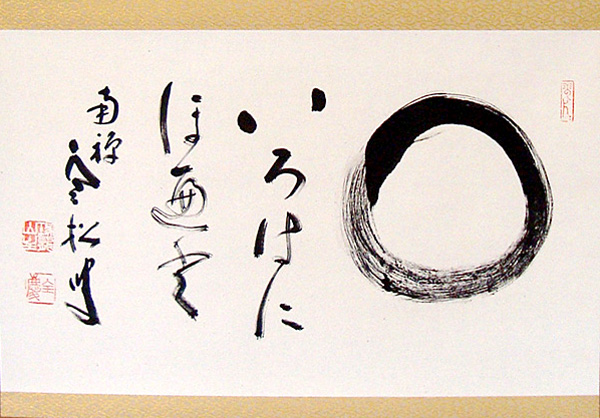
Enso by Shibayama Zenkei